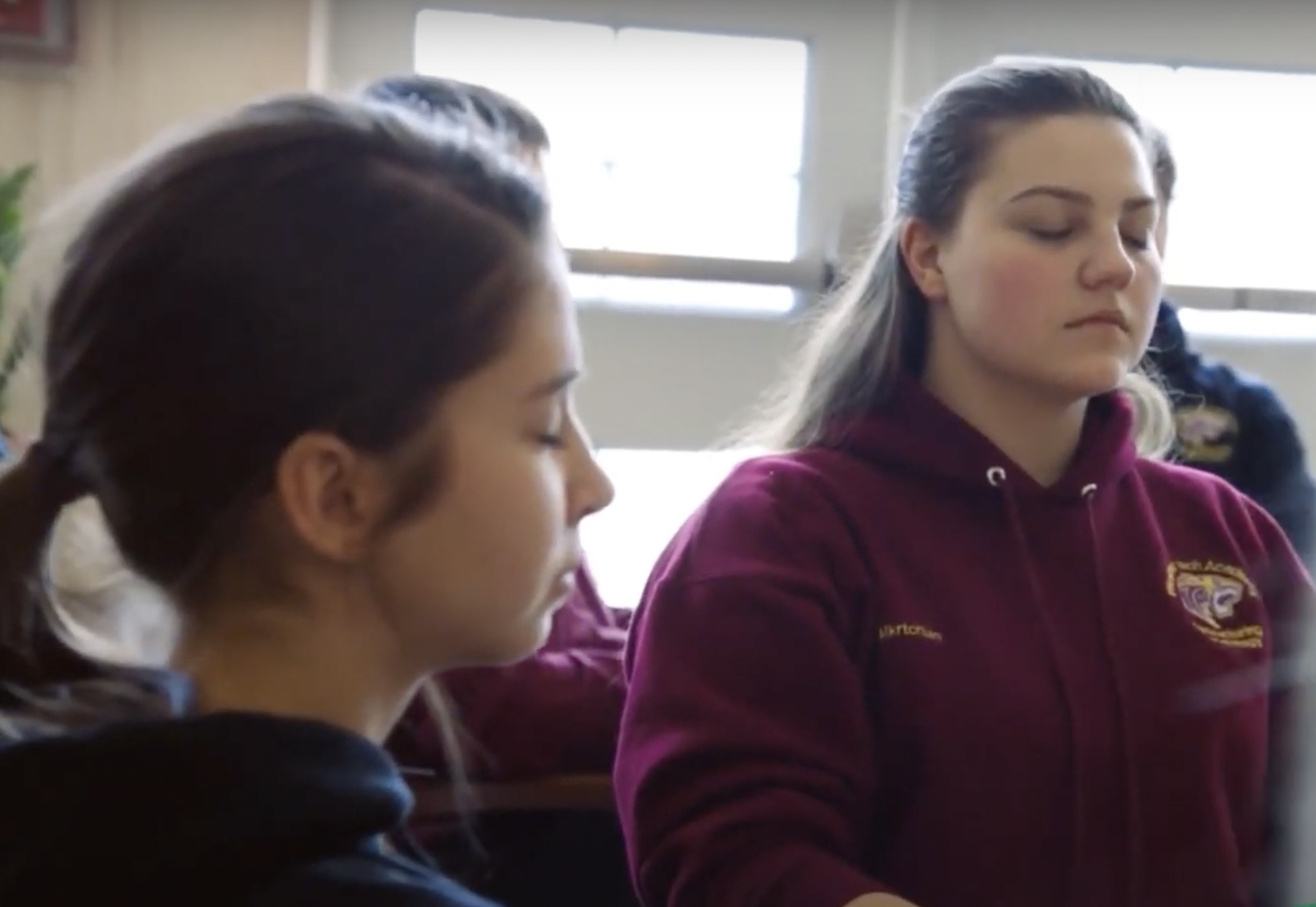Improve student mental health and learning through mindfulness
Lesson Learned:
By giving teachers a tool to support their children’s mental health, you enable teachers to teach and students to learn.
In 2022, 50% of middle school students and 56% of high school students in the United States identified feeling depressed, stressed, or anxious as their biggest obstacles to learning.[1] Prolonged chronic stress in adolescence increases susceptibility to mental health disorders[2] and chronic conditions like diabetes, obesity, or heart disease later in life.[3]
Inner Explorer offers mindfulness programs to help schools reduce student stress and improve student learning.
“Inner Explorer makes me feel relaxed and very calm and ready to learn. It can help everyone in our school. After Inner Explorer I am super ready to learn and I have an easier time writing”
— An elementary school student using Inner Explorer in her school
“In our school, we experienced a 50% reduction in student visits to my office, detentions, etc. since implementing the Inner Explorer Program. The more interesting phenomenon is the increase in compassion! Our students have become more helpful, more concerned about each other and go out of their way to engage when someone is hurt or in need.”
— Principal of a school implementing Inner Explorer

What it does
Inner Explorer’s model develops behavioral, emotional, and social awareness skills through daily mindfulness practice. The organization has developed a subscription software that provides short, audio-based mindfulness exercises for students and teachers from pre-kindergarten to 12th grade, emphasizing empathy, self-control, and self-regulation. Five-minute practices for younger students include a song at the end, and 10-minute practices for older students prompt a two-minute journaling reflection.
Inner Explorer serves over 2 million students in 50 states and over 3,000 schools, 70% of which experience high rates of poverty. The organization also serves juvenile detention centers, summer school providers, and foster care group homes. Its programming features narrators of different ages, ethnicities, and genders and is available in both English and Spanish.
Inner Explorer has a “press play” format that requires no advanced prep work and does not require teachers to lead the mindfulness sessions. Teachers can instead participate in a Teacher and Staff Wellness program to de-stress and be more present.
How effective it is
40 years of studies show that mindfulness-based stress reduction programs, including those in classrooms, improve physical and mental health[4], academic outcomes[5], and behavioral health.[6] Inner Explorer’s internal assessments have shown that, compared to before implementing the program, partner schools have 5% to 15% reductions in absenteeism and 28% higher grades in reading, math, and science. 96% of Inner Explorer sites renew the program after the initial contract term is up.
How philanthropy helps
Inner Explorer receives 70% of its funding from program sales, with the remaining 30% from philanthropic sources. Philanthropic support allows the organization to provide the program at about $2,400 per school (less than $10 per student per year) and to subsidize program fees for districts with fewer resources. Learn more at https://innerexplorer.org/.
More ways to help
Youth Guidance’s Becoming a Man (BAM) and Working on Womanhood (WOW) programs help at-risk youth in Boston, Chicago, Dallas, Kansas City, Los Angeles, and Washington, DC.
For guidance on ways funders can support mental health, see our Health in Mind guidance.
For more on supporting children’s education, see our Early School Success guidance.
Notes
[1] YouthTruth. (2022). Insights From the Student Experience: Emotional & Mental Health. https://youthtruthsurvey.org/emh/
[2] Sheth, C., McGlade, E., & Yurgelun-Todd, D. (2017). Chronic Stress in Adolescents and Its Neurobiological and Psychopathological Consequences: An RDoC Perspective. Chronic Stress, 1, 2470547017715645. https://doi.org/10.1177/2470547017715645
[3] Sujithra, S. (2016). Impact of Stress for Psychiatric Morbidity among Adolescent: A Review. Amarjeet Kaur Sandhu, 8(3), 5.
[4] Dunning, D. L., Griffiths, K., Kuyken, W., Crane, C., Foulkes, L., Parker, J., & Dalgleish, T. (2019). Research Review: The effects of mindfulness-based interventions on cognition and mental health in children and adolescents – a meta-analysis of randomized controlled trials. Journal of Child Psychology and Psychiatry, 60(3), 244–258. https://doi.org/10.1111/jcpp.12980
[5] Bakosh, L. S., Tobias Mortlock, J. M., Querstret, D., & Morison, L. (2018). Audio-guided mindfulness training in schools and its effect on academic attainment: Contributing to theory and practice. Learning and Instruction, 58, 34–41. https://doi.org/10.1016/j.learninstruc.2018.04.012
[6] Black, D. S., & Fernando, R. (2014). Mindfulness Training and Classroom Behavior Among Lower-Income and Ethnic Minority Elementary School Children. Journal of Child and Family Studies, 23(7), 1242–1246. https://doi.org/10.1007/s10826-013-9784-4
